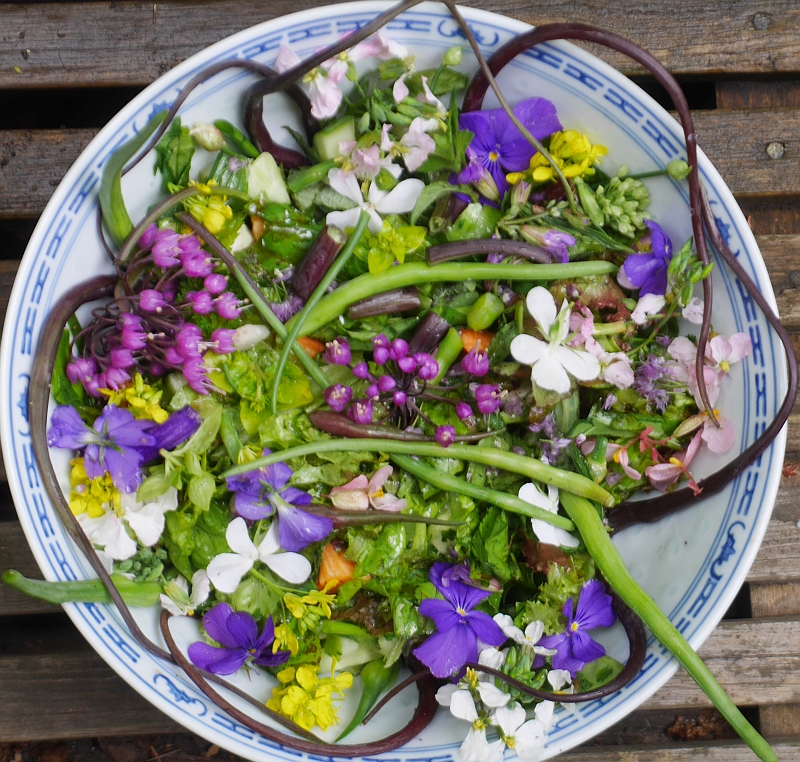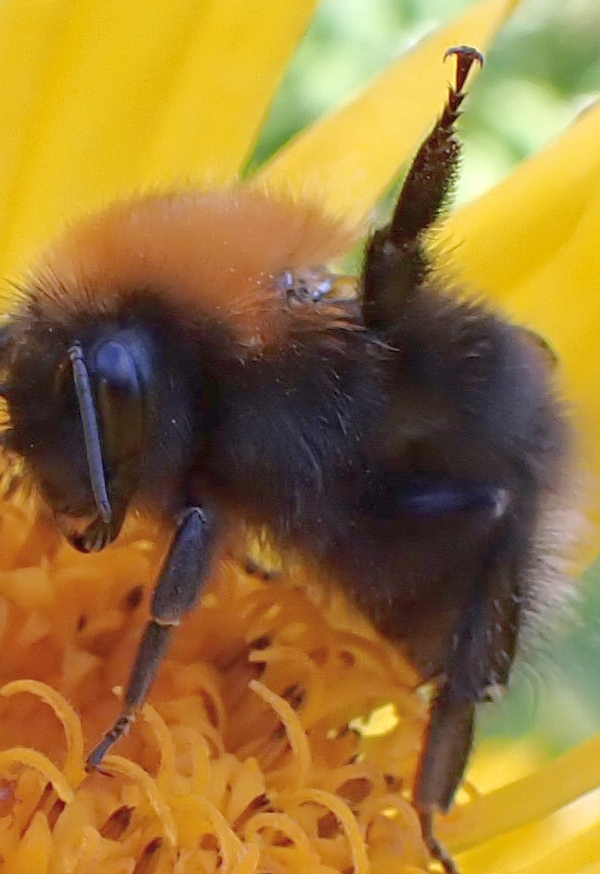



No, not my son Robin (he arrives tomorrow).
Robins (rødstrupe) have over the years I’ve lived here changed from a shy forest bird to the tame inquisitive bird I was familiar with in the UK before movimg to Norway. This morning a young bird joined me at the breakfast table for a preen, stretch and scratch before resuming catching insects…
To celebrate our good friends’ Jurgen Wegter and Ingvild Haga’s 50th birthdays together with Meg’s 50-year anniversary of arriving in Europe for the first time (in Southampton near where I lived at the time) as well as my 50 year anniversary of leaving school and a memorable holiday with 20-30 school friends in Newton Ferrers in Devon, we made a special gourmet dinner of green mac-cheese. It had masses of veg mixed in – the year’s first broad beans and swiss chard, chicory, common sow thistle (Sonchus oleraceus), Allium senescens leaves, shallots and garlic from last year, rehydrated winter chantarelles, golpar – ground seed of hogweed – Heracleum spp., together with ramsons salt, chili, sun dried tomatoes and mustard, all in a wholegrain spelt white sauce with wholegrain spelt pasta; it was topped with alpine bistort bulbils).
Not to be left out, the Extreme Salad Man contributed one of his Meditteranean diet inspired multispecies salads commemorating it is now almost 20 years since he put together a salad from home grown ingredients in Malvik comprising 537 ingredients. something the world hasn’t seen before or since (see https://www.edimentals.com/blog/?p=18997). The record was set on 24th August 2003. This time there were a mere 106 ingredients….sad to see, but he must be losing it….
Thanks to Jurgen for the salad pictures: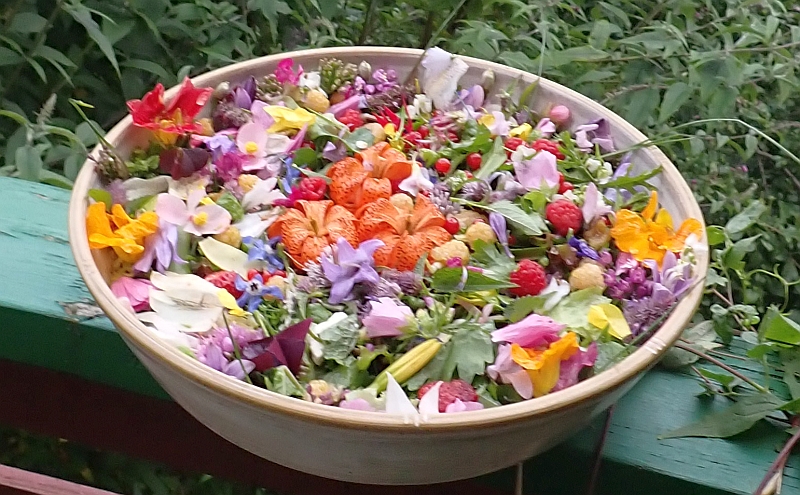


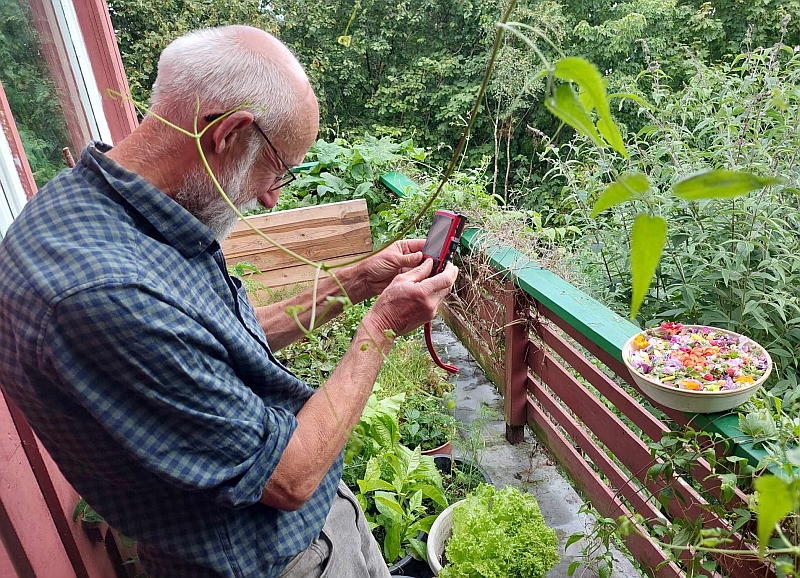

I don’t often post here about my other two gardens, the community garden at Væres Venner and the Onion Garden Chicago at the Ringve Botanical Garden in Trondheim.
The onion garden is nicely maturing and will be officially opened this summer on 26th August, 6 years since I started work creating a garden to house a national collection of old Norwegian perennial vegetable onions collected throughout the country, some 100 botanical species from around the world and many cultivars too!
Here’s a couple of videos showing the garden on 25th June 2023 close to peak flowering, although there will be flowering Alliums all the way from May to the first heavy frosts in October / November!
Tasty, beautiful and a great place to study pollinators! Can you smell it?
There are now over 500 pictures from the garden in this large Facebook album
What to do with the very last Sarpo Mira potatoes from the cellar? Last night’s dinner was Gnocchi made with Hablitzia leaf, Laportea canadensis (Canadian wood nettle tops) and stinging nettle tops. I must admit that our first attempt turned into a gnocchi soup, so we had a starter with exactly the same ingredients as the main course :) The second attempt was excellent though!
Hablitzia tamnoides leaves:
Canadian wood nettle (Laportea canadensis); the tops of the stems can also be used: Making the gnocchi (potato used instead of grain for pasta):
Making the gnocchi (potato used instead of grain for pasta):
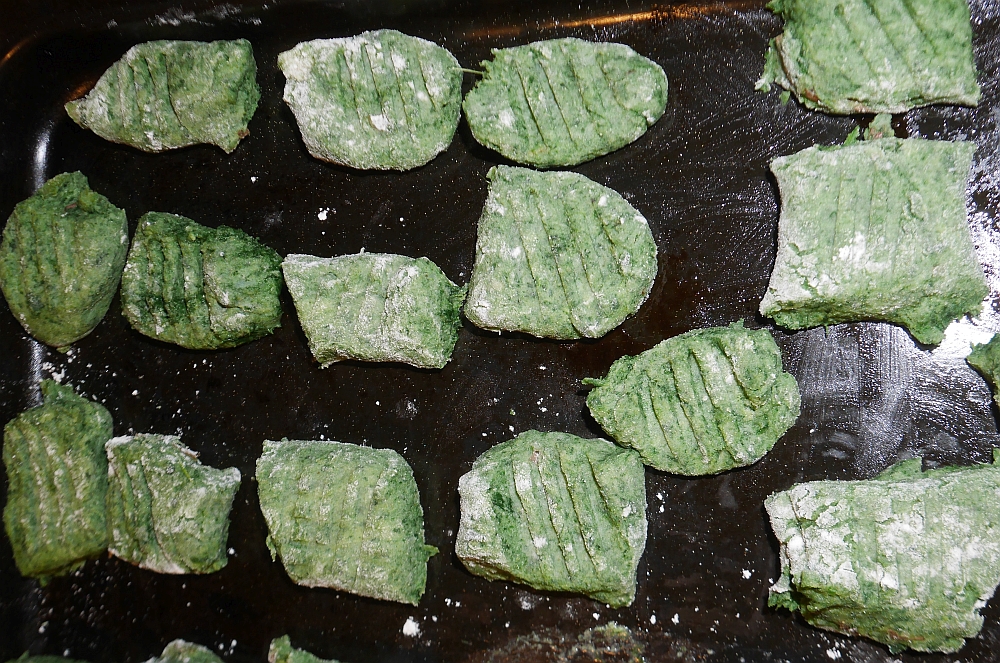

I remember years ago ordering seed of a special heirloom heritage radish “rat’s tail” (Raphanus sativus var caudatus) through the Heritage Seed Library in the UK. I remember that it was the gardener at naturalist Gilbert White’s House and Gardens at Selbourne in Hampshire that offered the seed and I remember that we ended up trading seed as they were looking for plants that Gilbert White mentioned; see https://gilbertwhiteshouse.org.uk/gilberts-gardens
The resultant plants had long green pods. However, I lost them eventually. Subsequently I’ve tried seed of rat’s tails several times and the pods have never been as long as those original plants.
Radishes are difficult to grow here in spring as our long days result in them quickly bolting (still looking for a good day neutral variety). I remember reading that when wild radish Raphanus sativus was originally domesticated in China that it was for the young seed pods rather than the swollen tap roots.
I therefore decided this winter to source various rat’s tail radishes from commercial sources and also obtained seed of 4 (of 8 available) accessions from the German genebank IPK Gatersleben. There was no available descriptons, so this was a random selection. They were sown in May in the World Garden (Verdenshagen) at the Væres Venner Community Garden (NB! I do grow a few annuals on the world garden if they have an interesting geographical story associated).
Yesterday I harvested a few of each and was blown away by the diversity with long red, thin green and two more stumpy varieties like I had been getting in recent years when ordering rat’s tails. Below is what Cornucopia II says on this interesting vegetable.
Assuming like me that you will want to grow your radishes to seed for the following year, the land is occupied all season in any case, so rat’s tails produce more than root radishes. The flowers are also also rather pretty bicoloured pink and white and area also attractive to pollinators! I think I will save seed and deveop a mixed grex of these and more varieties from the gene bank next year!
And this gave the opportunity for a unique rat’s tail salad for lunch with radish flowering tops too, also delicious (see the pictures at the bottom) :)
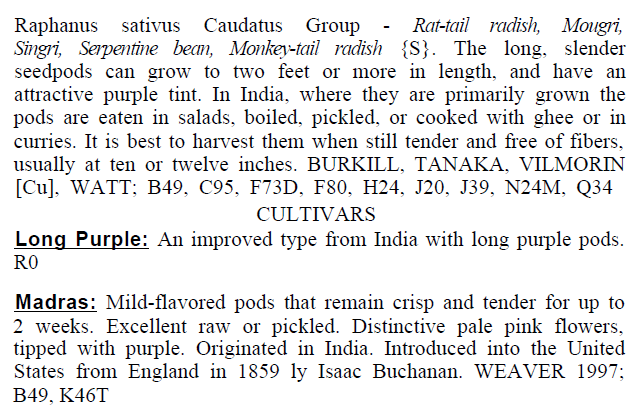




cc

